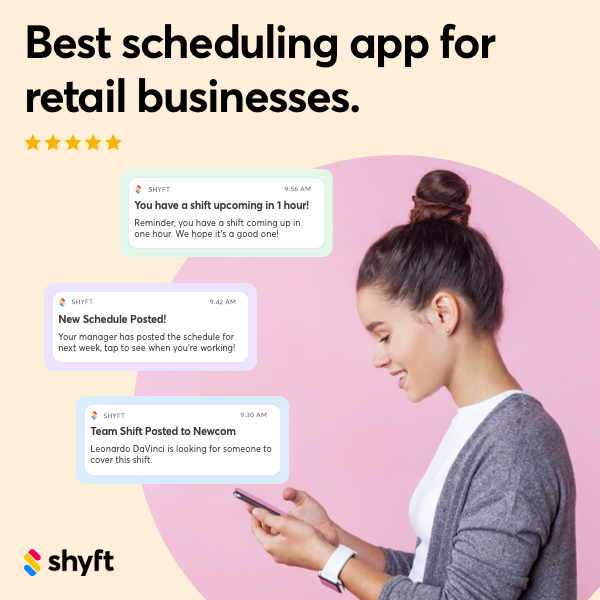In the digital age of workforce management, session duration has emerged as a critical metric within analytics and reporting for mobile and digital scheduling tools. This powerful indicator measures the length of time users spend actively engaged with scheduling platforms during a single visit or interaction. Understanding session duration provides invaluable insights into how employees and managers interact with scheduling software, revealing patterns of engagement, identifying potential workflow bottlenecks, and highlighting opportunities for optimization. For businesses leveraging digital tools to manage complex scheduling operations, monitoring session duration can be the difference between streamlined efficiency and prolonged, frustrating user experiences.
Session duration analytics serve as a window into user behavior, revealing not just how long individuals engage with scheduling tools, but also which features they utilize most frequently and where they may encounter friction. By analyzing these patterns across different user roles, departments, and time periods, organizations can make data-driven decisions to enhance their employee scheduling processes, improve user adoption, and ultimately drive operational efficiency. As scheduling software continues to evolve with increasingly sophisticated features, the ability to interpret and act upon session duration data has become an essential competency for organizations committed to optimizing their workforce management practices.
Understanding Session Duration Fundamentals
Session duration represents the total time a user spends actively engaged with a scheduling application during a single visit, from initial login to final exit. This metric is fundamental to understanding how efficiently employees and managers utilize digital scheduling tools in their daily workflows. Modern scheduling software measures session duration automatically, providing organizations with rich data that can illuminate user engagement patterns and identify areas for improvement in both the interface design and the underlying scheduling processes.
- Active vs. Idle Time: Sophisticated analytics distinguish between active engagement and idle periods when users leave the application open but inactive, ensuring accurate measurement of meaningful interactions.
- Session Boundaries: Sessions typically begin at login and end when users log out, close the application, or remain inactive for a predetermined timeout period, usually 30 minutes.
- Cross-Device Tracking: Advanced platforms can connect sessions across multiple devices, providing a unified view of how users transition between desktop and mobile interfaces.
- Role-Based Variations: Session durations naturally vary based on user roles—managers typically have longer sessions while creating schedules, while employees may have shorter sessions when checking shifts.
- Contextual Factors: Time of day, day of week, and proximity to schedule publication dates can significantly influence session duration patterns.
The value of session duration analytics lies not in the raw numbers alone, but in what they reveal about user behavior and system performance. Platforms like Shyft provide detailed session metrics that help businesses understand if users are quickly finding the information they need or struggling through complex workflows. By establishing baseline metrics and monitoring trends over time, organizations can gauge the impact of interface changes, feature additions, and training initiatives on user efficiency and satisfaction.
The Business Impact of Session Duration Analysis
Session duration analysis transcends technical metrics to deliver meaningful business impact across multiple operational dimensions. When properly interpreted, these analytics provide actionable intelligence that can drive improvements in efficiency, user satisfaction, and ultimately, bottom-line results. Organizations that prioritize session duration monitoring gain a competitive advantage through more responsive, user-centric scheduling systems that better serve both management and frontline workers.
- Operational Efficiency: Shorter session durations for routine tasks may indicate streamlined processes, while unusually brief sessions might suggest users aren’t finding what they need, potentially leading to missed shifts or scheduling errors.
- Training Effectiveness: Tracking session duration changes after implementing new features or training programs helps measure adoption success and identifies areas where additional support may be needed.
- ROI Validation: Demonstrating reduced session durations for common tasks provides tangible evidence of return on investment in scheduling technology.
- Resource Allocation: Understanding which scheduling functions consume the most user time helps organizations prioritize improvement initiatives and allocate resources effectively.
- Competitive Advantage: Businesses that optimize scheduling workflows based on session duration insights can achieve faster schedule creation and distribution, improving agility in responding to market demands.
The correlation between session duration and business outcomes becomes particularly evident in high-volume scheduling environments. For instance, retail operations managing hundreds of employees across multiple locations can reclaim significant management hours by reducing the time required to create, adjust, and communicate schedules. Similarly, in healthcare settings where scheduling complexity is heightened by certification requirements and coverage regulations, optimized session durations translate directly to more time spent on patient care rather than administrative tasks.
Essential Session Duration Metrics to Track
To derive maximum value from session duration analytics, organizations must track a comprehensive set of metrics that provide multidimensional insights into user behavior. While average session duration offers a useful baseline, more nuanced measurements reveal the specific patterns and anomalies that can drive meaningful improvements. Advanced scheduling platforms like Shyft’s analytics tools offer robust reporting capabilities that capture these critical metrics across different user segments and functional areas.
- Average Session Duration: The mean time users spend in the scheduling application provides a baseline metric, but should be segmented by role, department, and device type for meaningful analysis.
- Session Duration Distribution: Understanding the range and frequency of session lengths reveals more than averages alone, highlighting if users typically have consistent experiences or widely variable ones.
- Task-Specific Duration: Measuring time spent on specific activities—schedule creation, shift swapping, time-off requests—provides granular insights into workflow efficiency.
- Session Frequency: How often users access the system, when analyzed alongside duration, reveals patterns of engagement and potential areas of friction.
- Session Depth: The number of actions or screens accessed during a session indicates how thoroughly users engage with the platform’s capabilities.
- Abandonment Rates: Tracking where users exit sessions prematurely identifies potential pain points or confusing workflows in the scheduling interface.
The comparative analysis of these metrics across different timeframes yields particularly valuable insights. For example, tracking session duration changes before and after major system updates helps quantify the impact of interface improvements. Similarly, comparing session patterns between high-performing locations and those struggling with scheduling efficiency can reveal best practices that might be deployed organization-wide. This approach to metrics tracking transforms raw session data into strategic intelligence that directly supports operational excellence.
Interpreting Session Duration Data Effectively
The true value of session duration metrics emerges through thoughtful interpretation that places the data in proper context. Unlike many analytics where a single direction (higher or lower) is uniformly desirable, optimal session duration varies significantly based on task complexity, user role, and organizational goals. Effective interpretation requires a nuanced understanding of what different patterns indicate about user behavior and system performance within specific scheduling contexts.
- Context-Specific Benchmarks: Establish reasonable session duration expectations for different scheduling tasks—creating a monthly schedule naturally requires more time than checking next week’s shifts.
- Pattern Recognition: Look for recurring session duration patterns tied to events like schedule publication dates, seasonal hiring peaks, or specific departments to identify operational rhythms.
- Anomaly Detection: Unusually long sessions might indicate users struggling with complex interfaces, while extremely short sessions could suggest connectivity issues or user frustration.
- Trend Analysis: Gradual changes in session duration over time often reveal the cumulative impact of system improvements or degradations that might not be apparent in day-to-day operations.
- Correlation Studies: Examine relationships between session duration and business outcomes like scheduling accuracy, employee satisfaction, or labor cost optimization.
The most sophisticated approach to session duration analysis incorporates qualitative feedback alongside quantitative metrics. For example, conducting targeted user interviews or surveys following the detection of significant session duration changes can reveal the “why” behind the numbers. This mixed-methods approach helps organizations avoid misinterpretations, such as assuming shorter sessions always indicate improved efficiency when they might sometimes reflect frustrated abandonment. By combining advanced analytics with contextual understanding, businesses can extract actionable insights that drive meaningful improvements in their scheduling processes.
Optimizing Workflows Based on Session Insights
Session duration analytics provide a foundation for targeted workflow optimization initiatives that can transform scheduling efficiency. Rather than making assumptions about user experience, data-driven improvements leverage actual behavior patterns to identify and address specific pain points in the scheduling process. This methodical approach to optimization delivers measurable improvements in both process efficiency and user satisfaction across all levels of the organization.
- Friction Point Identification: Analyze segments of the scheduling workflow where session durations spike unexpectedly to identify potential bottlenecks or confusing interfaces that need refinement.
- Feature Prioritization: Use session engagement data to determine which scheduling features deserve enhancement investment based on actual usage patterns and time investment.
- Role-Based Customization: Create tailored interfaces for different user types—managers, schedulers, employees—based on their specific session patterns and scheduling needs.
- Process Reengineering: Redesign complex scheduling workflows that consistently show prolonged session durations to streamline steps and eliminate redundancies.
- Automation Opportunities: Identify repetitive tasks that consume significant session time as candidates for automation or AI-assisted scheduling to reduce manual effort.
The optimization process becomes particularly powerful when examined through the lens of specific use cases. For instance, analysis might reveal that managers spend disproportionate time on time-off request management during certain seasonal periods. This insight could drive the implementation of streamlined approval workflows or employee self-service capabilities that reduce administrative burden while improving response times. Similarly, identification of extended sessions related to shift marketplace activities might prompt the development of enhanced filtering tools or personalized recommendations that help users find suitable shift exchanges more efficiently.
Leveraging Advanced Reporting Features
Modern scheduling platforms offer sophisticated reporting capabilities that transform raw session duration data into actionable intelligence. These advanced features enable organizations to dissect user interaction patterns across multiple dimensions, creating a comprehensive picture of how their scheduling tools are being utilized. By mastering these reporting tools, businesses can unlock deeper insights that drive continuous improvement in their scheduling processes and interfaces.
- Customizable Dashboards: Configure personalized analytics displays that highlight the most relevant session metrics for different stakeholder groups—operations might focus on efficiency metrics while IT prioritizes system performance indicators.
- Segmentation Capabilities: Slice session data by department, location, role, device type, or other variables to identify performance patterns and optimization opportunities specific to different user groups.
- Comparative Analysis: Evaluate session metrics across different time periods, locations, or user groups to benchmark performance and identify both best practices and improvement areas.
- Predictive Analytics: Leverage machine learning capabilities to anticipate future session patterns based on historical data, enabling proactive optimization of high-traffic scheduling periods.
- Alert Mechanisms: Implement automated notifications for significant deviations in session duration patterns that might indicate system issues or user adoption challenges requiring immediate attention.
Integration capabilities further enhance the value of session duration reporting by connecting these metrics with broader business intelligence. For example, integrating scheduling analytics with labor management systems allows organizations to correlate session efficiency with labor cost outcomes. Similarly, connecting session data with employee feedback platforms can reveal relationships between scheduling experience and workforce satisfaction. These integrated insights provide a more holistic view of how scheduling processes impact overall business performance, enabling more strategic decision-making about technology investments and process improvements.
Session Duration Benchmarking Strategies
Establishing meaningful benchmarks for session duration provides essential context for evaluating performance and setting improvement targets. Effective benchmarking goes beyond arbitrary standards to create realistic, relevant reference points that account for the unique characteristics of an organization’s scheduling operations. This structured approach to comparison enables businesses to accurately assess their current state and measure progress toward optimization goals.
- Internal Longitudinal Benchmarking: Track session duration trends over time within your organization to establish baseline performance and measure the impact of improvements or system changes.
- Functional Benchmarking: Create separate benchmarks for different scheduling functions—schedule creation, shift trading, time-off management—to account for inherent complexity differences.
- Peer Comparison: Where available, utilize anonymized industry data to compare your organization’s session metrics against similar businesses facing comparable scheduling challenges.
- Best-in-Class Analysis: Identify top performers within your organization (locations, departments) and analyze their session patterns to establish internal best practices that can be replicated.
- Progressive Targets: Set incremental improvement goals for session duration rather than arbitrary targets, acknowledging that optimization is an ongoing journey rather than a destination.
The most valuable benchmarking approaches incorporate contextual factors that influence session duration. For instance, hospitality businesses with highly variable staffing needs might naturally experience longer scheduling sessions than organizations with more stable workforce requirements. Similarly, sessions might legitimately lengthen during implementation of new scheduling rules or compliance requirements. By establishing context-aware benchmarks, businesses can distinguish between expected variations and actual performance issues, focusing improvement efforts where they will deliver the greatest impact.
Training and User Education Impact
Effective training and user education programs can dramatically impact session duration metrics, often delivering faster improvements than interface redesigns or feature enhancements. By equipping users with the knowledge and skills to navigate scheduling tools efficiently, organizations can reduce frustration, minimize wasted time, and maximize the value of their scheduling technology investments. A strategic approach to training that leverages session duration insights creates a virtuous cycle of continuous improvement in scheduling operations.
- Data-Driven Training Focus: Analyze session duration patterns to identify specific functions or features where users consistently spend excessive time, then develop targeted training to address these pain points.
- Role-Specific Education: Create customized training programs for different user types—schedulers, managers, employees—that address their unique scheduling responsibilities and common efficiency challenges.
- Workflow Optimization: Teach users optimized pathways through complex scheduling tasks, highlighting shortcuts, bulk actions, and time-saving features that reduce session duration.
- Continuous Reinforcement: Implement regular micro-training sessions that introduce efficiency tips and respond to emerging session duration trends rather than relying solely on initial onboarding.
- Peer Learning: Facilitate knowledge sharing between users who demonstrate efficient session patterns and those who struggle with similar tasks, creating a collaborative improvement culture.
The effectiveness of training initiatives should be measured directly through session duration analytics, creating accountability and enabling continuous refinement. For example, manager training programs focused on schedule creation efficiency can be evaluated by comparing pre- and post-training session durations for that specific task. This measurement-focused approach allows organizations to quantify training ROI and prioritize educational efforts that deliver the greatest impact on operational efficiency. Additionally, incorporating user feedback mechanisms within the scheduling interface can provide qualitative insights that complement quantitative session data, creating a more complete picture of the user experience and identifying opportunities for further education.
Mobile vs. Desktop Session Analysis
The proliferation of mobile scheduling access has created a multi-platform environment where users frequently transition between devices based on context, location, and task complexity. Understanding the differences in session patterns between mobile and desktop interfaces provides crucial insights for optimizing the overall scheduling experience. This comparative analysis informs platform-specific improvements while ensuring a cohesive cross-device experience that accommodates diverse usage scenarios.
- Task Distribution Patterns: Analyze which scheduling functions users preferentially perform on each platform—employees might check schedules primarily on mobile while managers create schedules on desktop—to optimize each interface for its primary use cases.
- Session Duration Variations: Compare typical session lengths between platforms to understand how device context influences engagement patterns and identify potential usability issues unique to each interface.
- Cross-Device Journeys: Track how users transition between platforms during complex scheduling processes to ensure seamless continuity and identify potential friction points in the cross-device experience.
- Feature Utilization Differences: Examine which scheduling capabilities see higher or lower engagement on each platform to inform feature prioritization and interface optimization decisions.
- Performance Disparities: Identify any significant differences in task completion efficiency between platforms that might indicate optimization opportunities specific to mobile or desktop environments.
The insights gained from this comparative analysis directly inform strategic decisions about platform development priorities. For instance, if data shows that managers frequently begin creating schedules on desktop but later make adjustments via mobile, ensuring perfect synchronization and consistent functionality becomes crucial. Similarly, if mobile sessions for certain tasks consistently show higher abandonment rates than desktop equivalents, this might indicate mobile-specific usability issues that need addressing. By optimizing each platform for its most common use cases while maintaining a cohesive cross-device experience, organizations can maximize efficiency and satisfaction across the entire scheduling ecosystem.
Future Trends in Session Analytics
The landscape of session duration analytics continues to evolve rapidly, with emerging technologies and methodologies promising even deeper insights into user behavior and scheduling efficiency. Forward-thinking organizations should monitor these developments to maintain competitive advantage in workforce management. These innovations will transform how businesses understand and optimize the scheduling experience, moving beyond simple time measurements to create truly intelligent, adaptive systems.
- AI-Powered Behavioral Analysis: Advanced machine learning algorithms will move beyond basic metrics to identify subtle patterns in user navigation, predicting potential friction points before they impact efficiency.
- Predictive Optimization: Systems will automatically suggest personalized interface adjustments based on individual usage patterns, creating adaptive experiences that improve efficiency over time.
- Emotion Analysis: Integration of sentiment detection through cursor movements, typing patterns, and even facial recognition (with appropriate privacy controls) will provide insight into user frustration or satisfaction during scheduling sessions.
- Voice Interaction Analytics: As voice interfaces become more prevalent in scheduling tools, new metrics will emerge to measure efficiency and satisfaction in spoken interactions.
- Augmented Reality Integration: The emergence of AR in workplace applications will create new dimensions of session analysis as users interact with scheduling information overlaid on physical environments.
Privacy considerations will necessarily shape the evolution of these analytics capabilities, with successful implementations striking a balance between insight generation and user trust. Organizations should develop clear governance frameworks that ensure session analytics enhance the user experience without creating surveillance concerns. By ethically leveraging these emerging capabilities, businesses can create scheduling environments that continuously adapt to user needs while respecting boundaries. The organizations that most effectively navigate this balance will achieve superior workforce management outcomes while maintaining strong relationships with their employees.
Implementing a Session Duration Optimization Program
Transforming session duration insights into tangible improvements requires a structured, systematic approach that engages stakeholders across the organization. A comprehensive optimization program establishes clear goals, measurement methodologies, and feedback loops that drive continuous enhancement of the scheduling experience. This methodical framework ensures that analytics translate into meaningful operational improvements rather than remaining interesting but unutilized data points.
- Baseline Assessment: Conduct a thorough audit of current session patterns across different user groups, functions, and platforms to establish starting metrics and identify priority improvement areas.
- Cross-Functional Team: Form an optimization task force including representatives from operations, IT, HR, and front-line scheduling users to provide diverse perspectives on improvement opportunities.
- Goal Setting: Establish specific, measurable targets for session duration improvements in high-priority scheduling functions based on business impact and improvement potential.
- Iterative Implementation: Develop and deploy improvements in short, focused cycles with clear success metrics rather than attempting comprehensive overhauls that delay feedback and results.
- User Feedback Integration: Complement quantitative session data with qualitative input from actual users through surveys, interviews, or focus groups to ensure improvements address real needs.
Organizations that successfully implement session optimization programs typically begin with focused “quick wins” that demonstrate value and build momentum. For instance, addressing the highest-friction points in manager scheduling workflows might immediately reclaim hours of administrative time while building support for broader initiatives. As the program matures, the focus typically expands from tactical improvements to more strategic enhancements that align with broader workforce management goals. Throughout this evolution, maintaining consistent measurement methodologies ensures accurate tracking of progress and ROI, creating a compelling case for continued investment in scheduling experience optimization.
Conclusion
Session duration analytics have emerged as a pivotal tool for organizations seeking to optimize their scheduling operations and enhance workforce management efficiency. By systematically tracking, analyzing, and acting upon these metrics, businesses can transform scheduling from a necessary administrative burden into a strategic advantage that supports operational agility and employee satisfaction. The insights gleaned from session duration data illuminate not just how users interact with scheduling tools, but also how these interactions impact broader organizational outcomes from labor cost management to workforce retention.
Moving forward, organizations should approach session duration optimization as an ongoing journey rather than a one-time initiative. The most successful implementations establish continuous improvement cycles that regularly reassess metrics, gather user feedback, implement targeted enhancements, and measure results. By making session duration analytics a core component of their scheduling strategy, businesses can ensure their workforce management practices evolve in alignment with both technological capabilities and user needs. Those who master this approach will achieve not only more efficient scheduling operations but also more engaged workforces and more responsive business models capable of thriving in rapidly changing market conditions.
FAQ
1. What is considered a healthy session duration for scheduling software?
A healthy session duration varies significantly based on the task being performed and user role. For employees checking schedules, sessions of 1-3 minutes typically indicate they’re finding information efficiently. For managers creating complex schedules, sessions of 15-30 minutes may be appropriate. The key is to establish baselines for different functions and monitor for significant deviations that might indicate problems. Rather than focusing on absolute numbers, look for improvements over time and consistency across similar user groups. Remember that extremely short sessions might indicate frustration rather than efficiency, while unusually long sessions could reveal workflow bottlenecks requiring attention.
2. How can session duration analytics identify training opportunities?
Session duration analytics excel at revealing specific areas where users struggle with scheduling tools. Look for patterns such as consistently longer sessions for particular user groups when performing common tasks, high variability in completion times for standardized processes, or extended time spent on specific screens. These indicators often point to knowledge gaps that targeted training can address. You can verify these opportunities by comparing experienced users’ session patterns with those of novices performing identical tasks. After implementing training, measure its effectiveness by tracking changes in session duration for the targeted processes, creating a continuous improvement cycle that systematically enhances user proficiency.
3. How do mobile session durations typically differ from desktop sessions?
Mobile sessions are typically 30-50% shorter than desktop equivalents and focus on different scheduling functions. Users generally prefer mobile for quick actions like checking schedules, requesting time off, or accepting shift offers, while turning to desktop interfaces for more complex tasks like creating schedule templates or running detailed reports. Mobile sessions also show more frequent usage but with higher abandonment rates for complex tasks, indicating users start processes on mobile but switch to desktop when complexity increases. Understanding these differences is crucial for optimizing each platform appropriately—mobile interfaces should prioritize speed and simplicity for common tasks, while desktop experiences can accommodate more comprehensive functionality.
4. What factors can artificially impact session duration metrics?
Several factors can skew session duration data, potentially leading to misinterpretation. Technical issues like connectivity problems or system slowdowns can artificially extend sessions. Session timeout settings dramatically affect measurements—shorter timeouts create more fragmented sessions while longer ones may include substantial idle time. User behavior patterns like leaving applications open in background tabs can significantly inflate durations. Environmental factors such as workplace interruptions often create extended sessions that don’t reflect actual engagement. To mitigate these effects, use analytics tools that distinguish between active and idle time, implement appropriate timeout thresholds, and consider complementary metrics like action frequency and completion rates for a more complete picture of user engagement.
5. How should session duration be analyzed alongside other scheduling metrics?
Session duration provides maximum value when analyzed in conjunction with complementary metrics that create a more comprehensive view of scheduling effectiveness. Combine duration data with task completion rates to distinguish between efficiency and abandonment. Correlate session patterns with specific business outcomes like schedule coverage, labor costs, or employee satisfaction to identify meaningful optimization opportunities. Analyze the relationship between session frequency and duration to understand if users are achieving their goals in fewer, more efficient sessions or requiring multiple attempts. Integrate session insights with user feedback to add qualitative context to quantitative patterns. This multidimensional approach transforms session duration from an isolated technical metric into a powerful lens for understanding and enhancing the overall scheduling experience.












